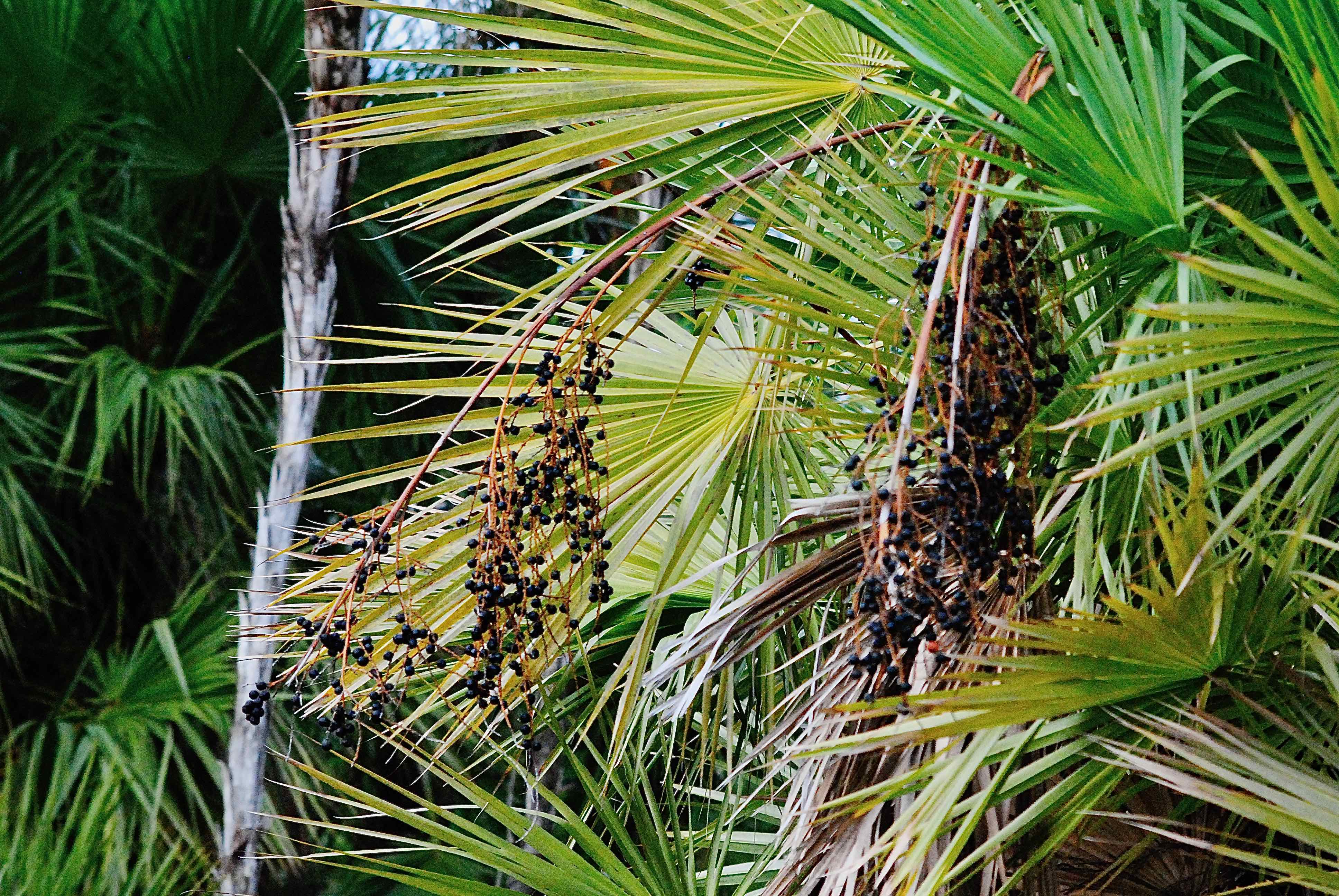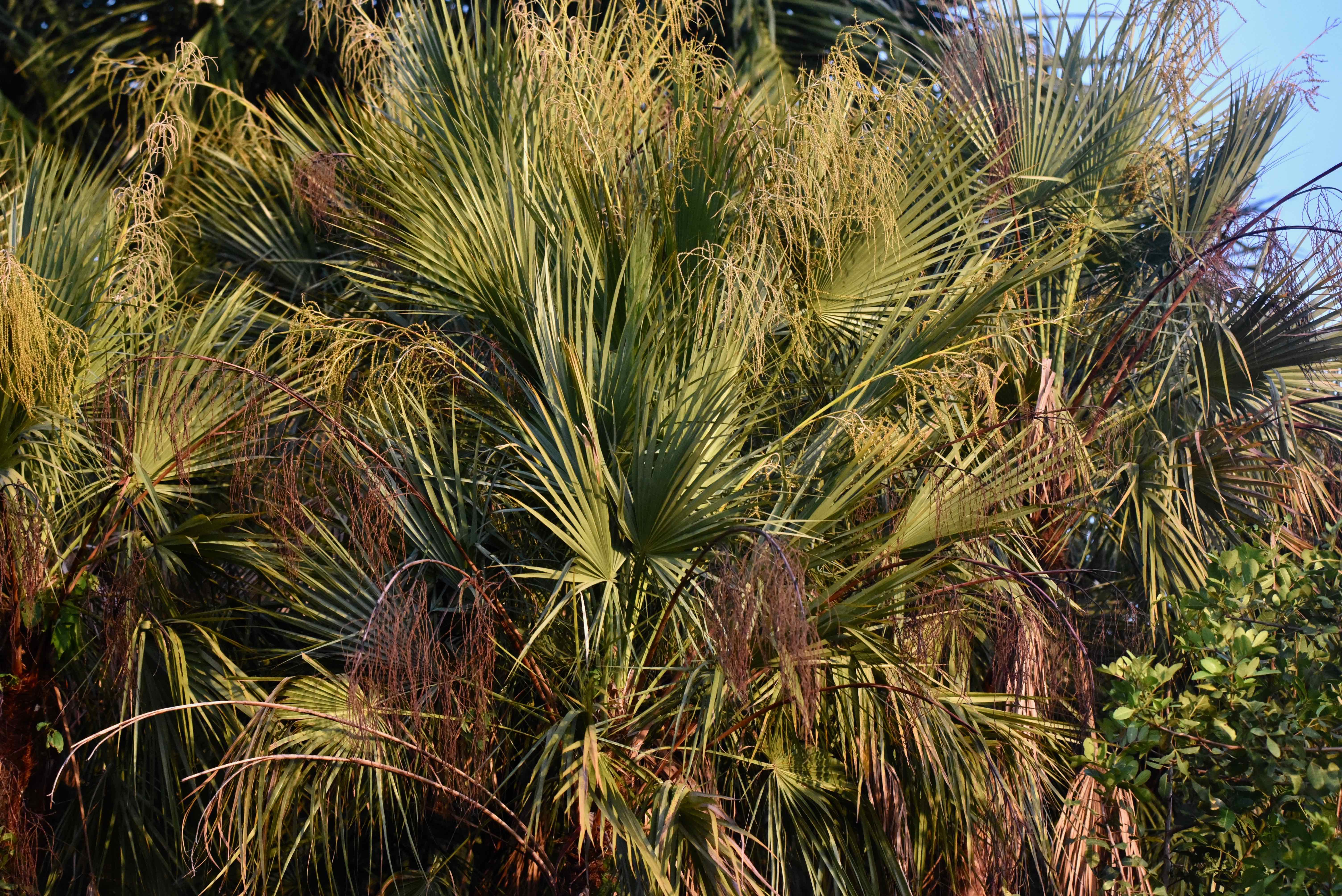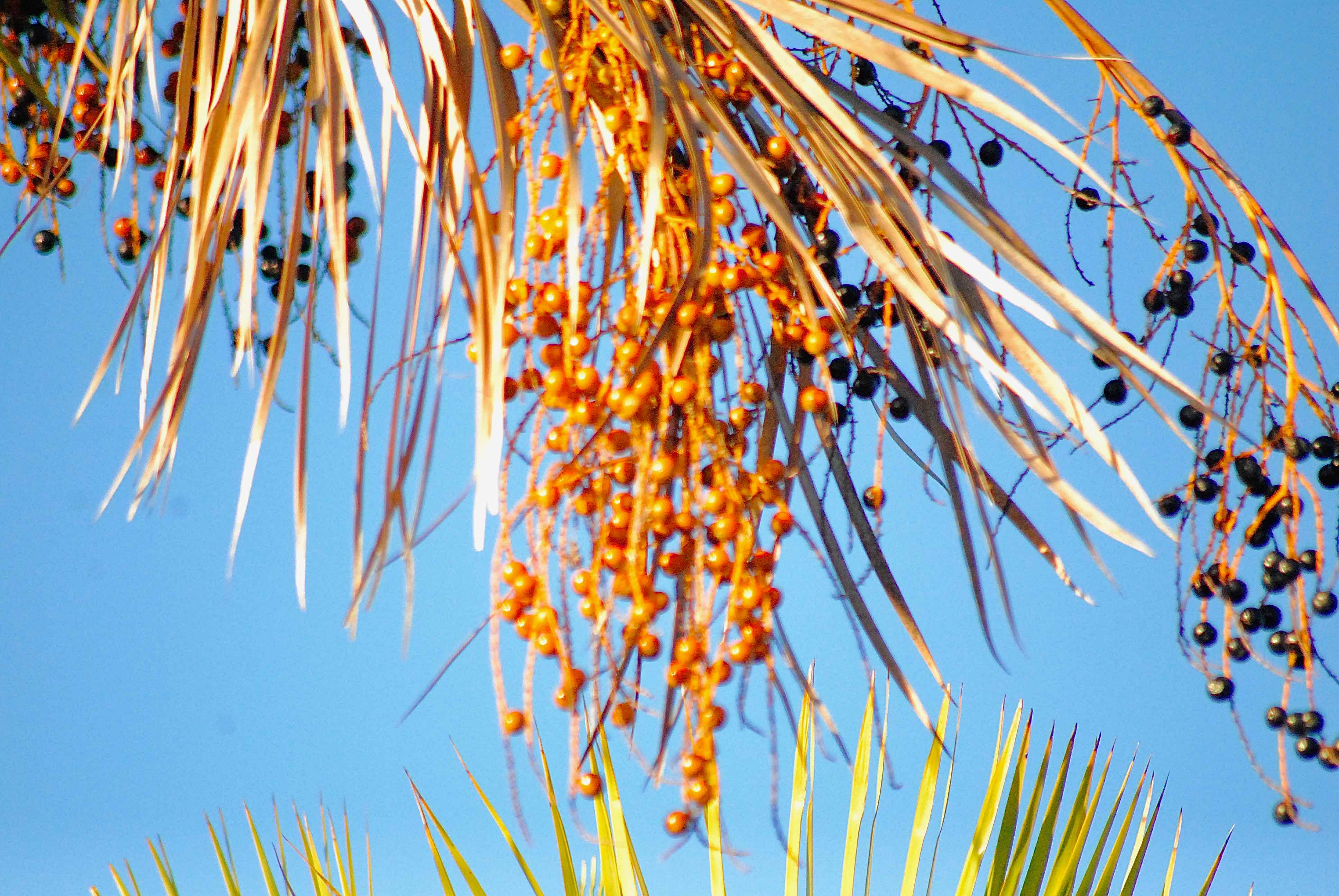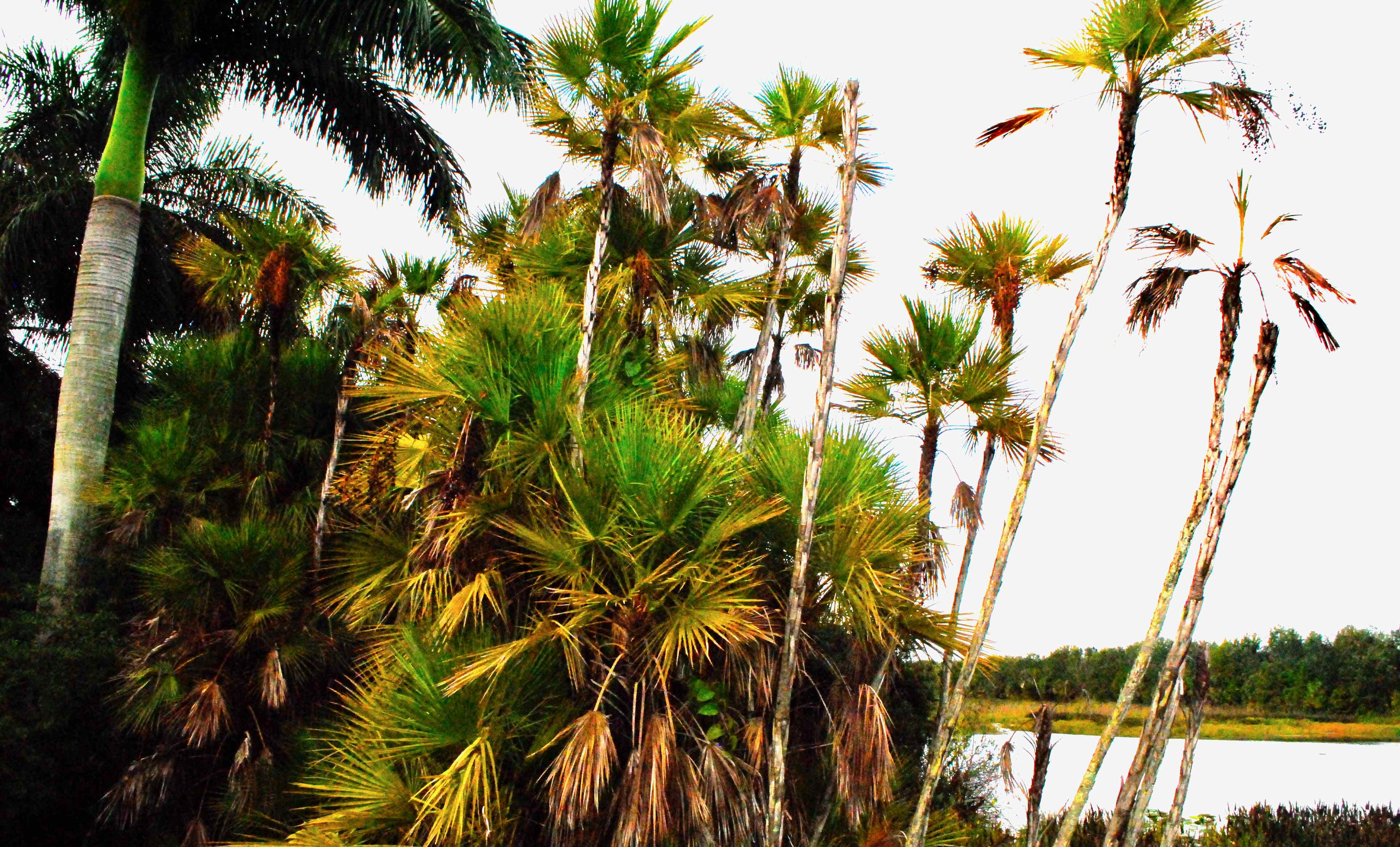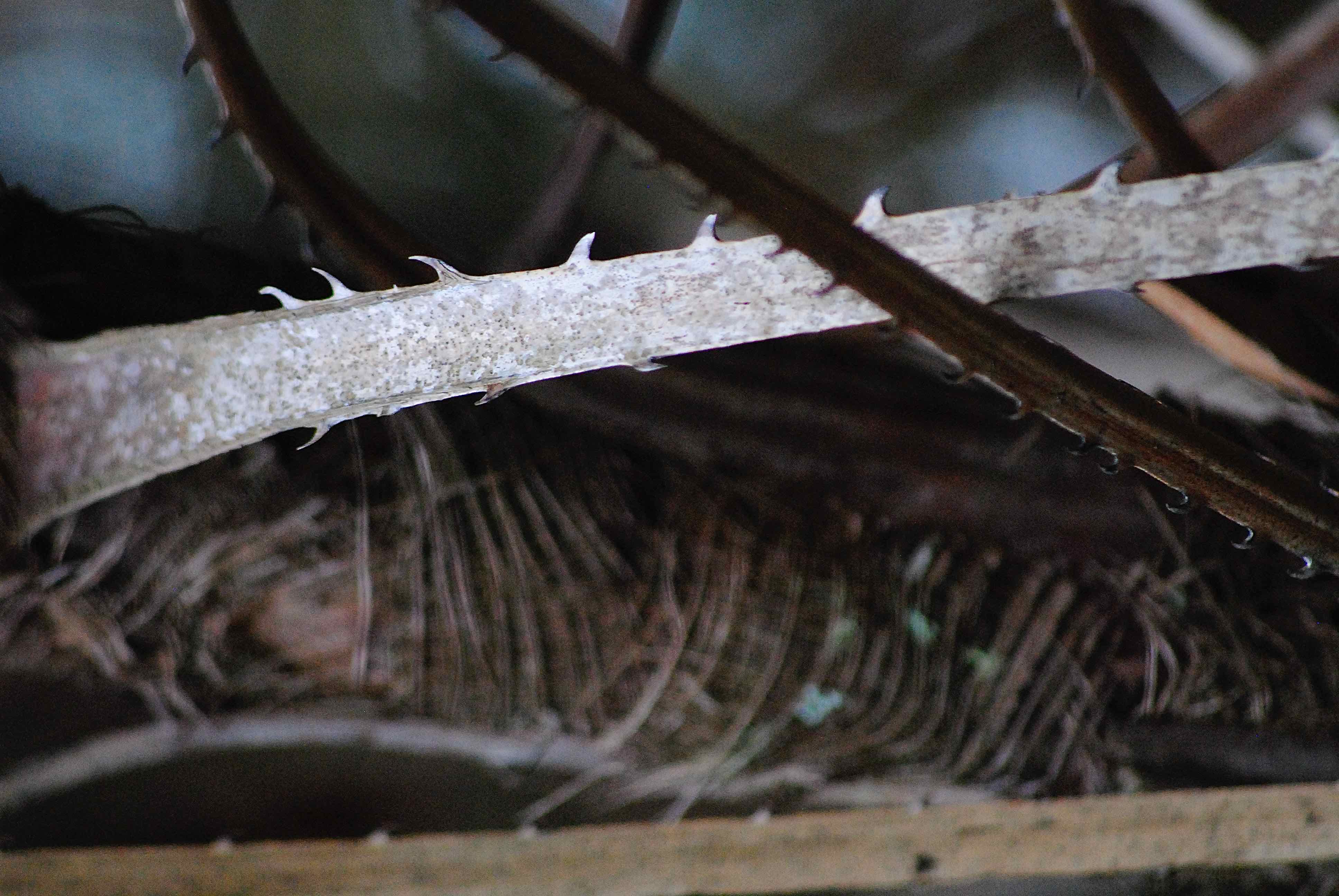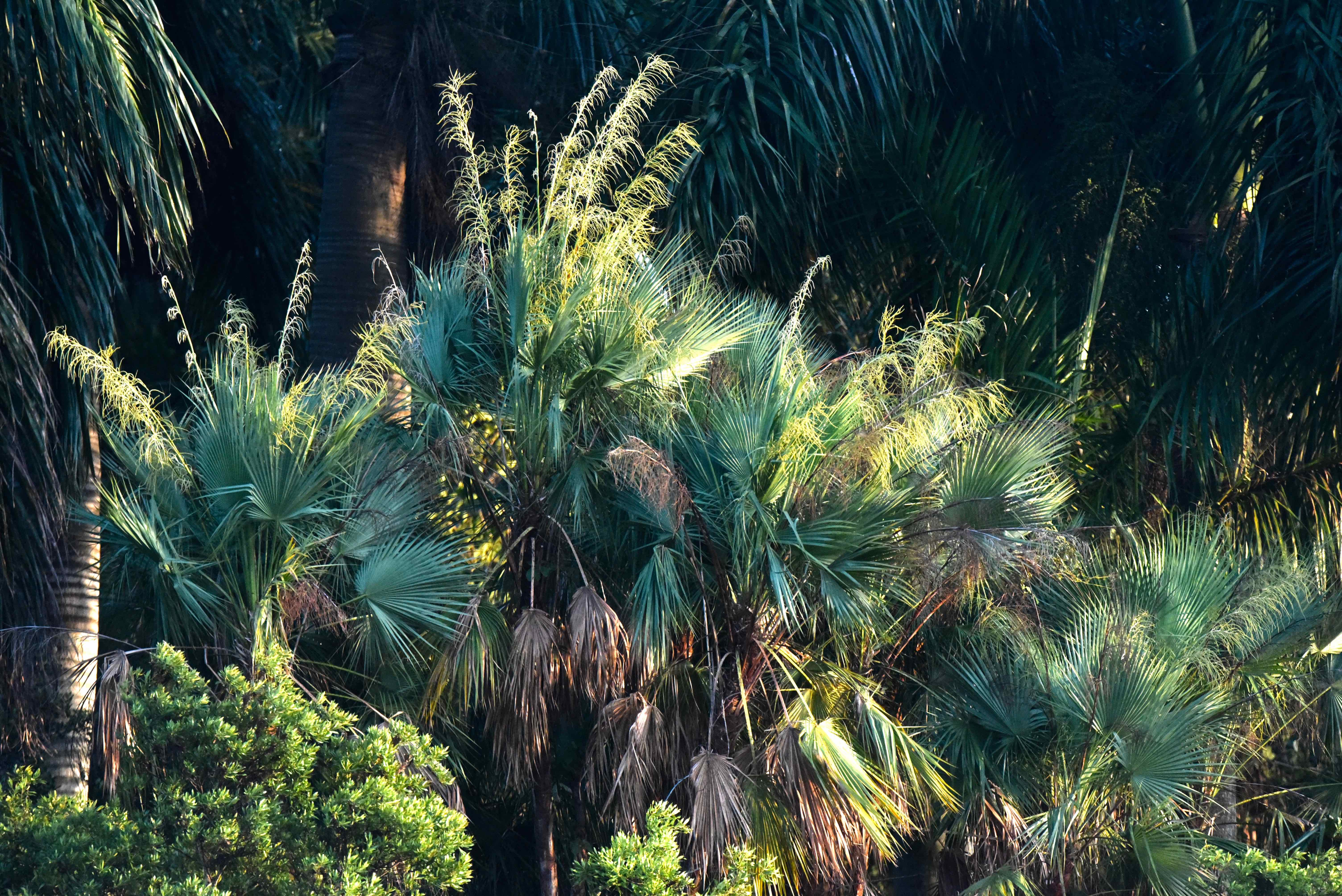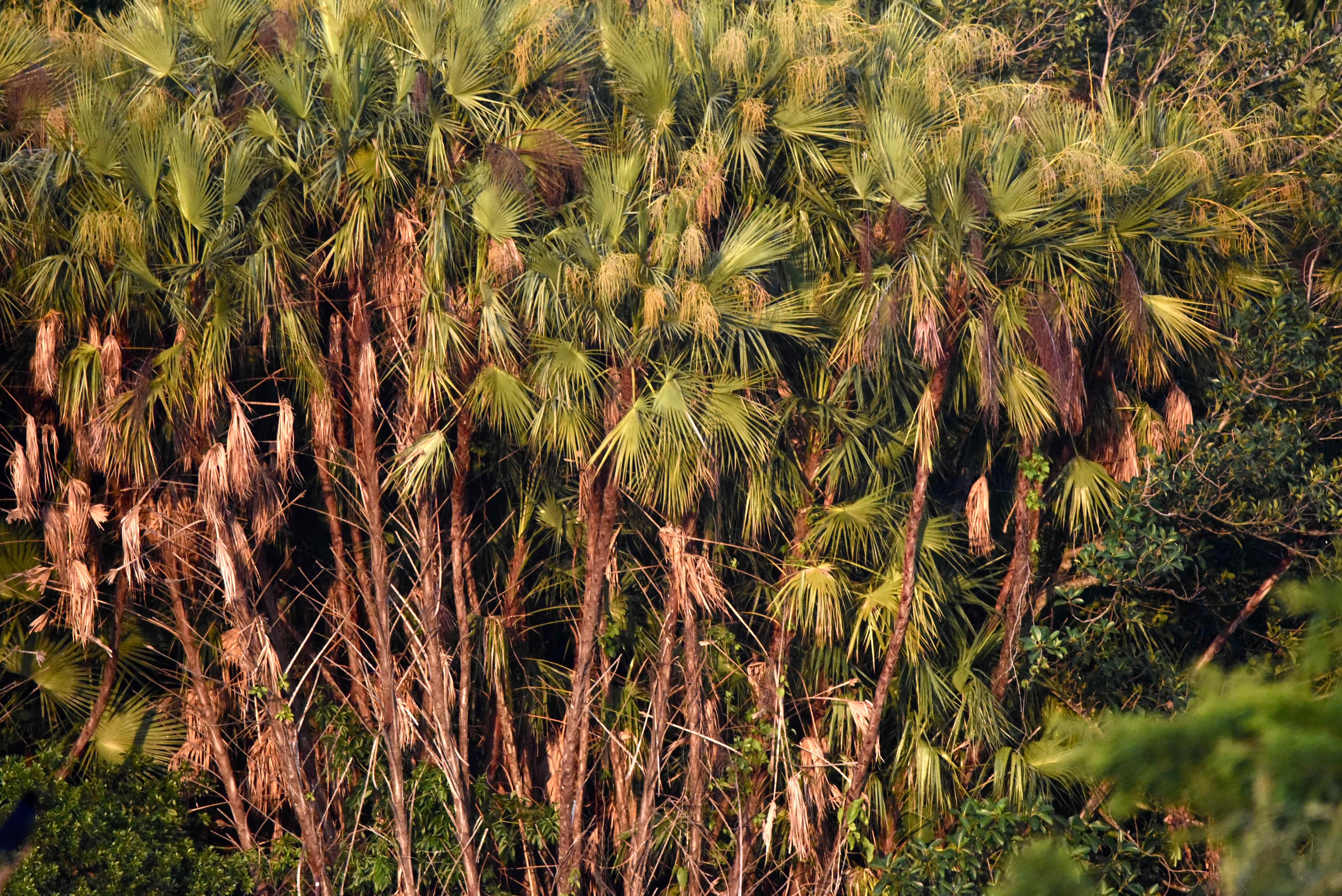
Everglades palm, photographed at Green Cay Nature Center, Boynton Beach, Palm Beach County, in April 2021.
If you crossed an areca palm with a cabbage palm, and crossed it again with a saw palmetto, this is what you might get — the everglades palm. It is tall and gangly, clustering like the areca, with the shaggy trunk of the cabbage palm. Plus, the stems of the leaves are armed with sharp teeth of the saw palmetto.
It is one of 11 palm trees native to Florida, and a rare one at that. Florida officials have deemed it to be threatened, in fact. It is only found in Florida among the 50 states, and its natural range only extends to Miami-Dade, Collier and mainland Monroe — basically the confines of Everglades National Park. We've seen some maps put it in Pinellas County as well.
However, everglades palm, Acoelorrhaphe wrightii, is widely cultivated and frequently used in landscaping in other parts of the state. We found everglades palm growing in a hammock within Green Cay Nature Center, almost certainly planted when the center was created back in 2004. It's also seen a lot in the landscaping along Hagen Ranch Road just south of the Green Cay entrance and in the median in the street right outside our development.
Beyond Florida, everglades palm is native to the Bahamas, Cuba, Mexico, Central America and Colombia's Caribbean Islands.
Everglades palms do not tolerate cold weather, limiting how far north they can grow. They can reach 30 feet in height, with a crown spreading 20 feet across. The leaves are fan-like, light green, with blades about two feet long. Trunks are only a few inches in diameter and are covered with fibers and leaf bases — the remains where leaves once grew. The trunks often twist and turn as they grow in order to get more sunlight.
The tree produces large spikes of small white flowers, called inflorescences, in spring and summer.
The fruit is small, first green, then orange, then turning black when fully ripe. Birds eat the berries — technically drupes —and in turn help disperse the seeds. The tree is also a source of cover for birds.
It grows in bay heads, hammocks and swamps. In the Everglades, the palm can form large masses that look like islands in the river of grass. It is one of the few palms that tolerate standing water.
It will also tolerate occasional fires, a useful feature for a tree living in the Everglades, where lightning-caused blazes are a regular occurance.
It is a member of Arecaceae, the palm family. Other common names include paurotis palm, wright palm and silver saw palm.
The scientific name of everglades palm honors Charles Wright, a 19th century plant collector from Connecticut.
Click on photo for larger image
Links for Everglades Palm / Paurotis Palm

